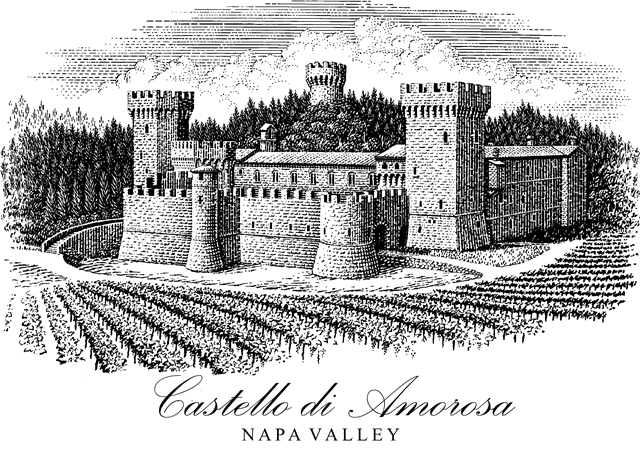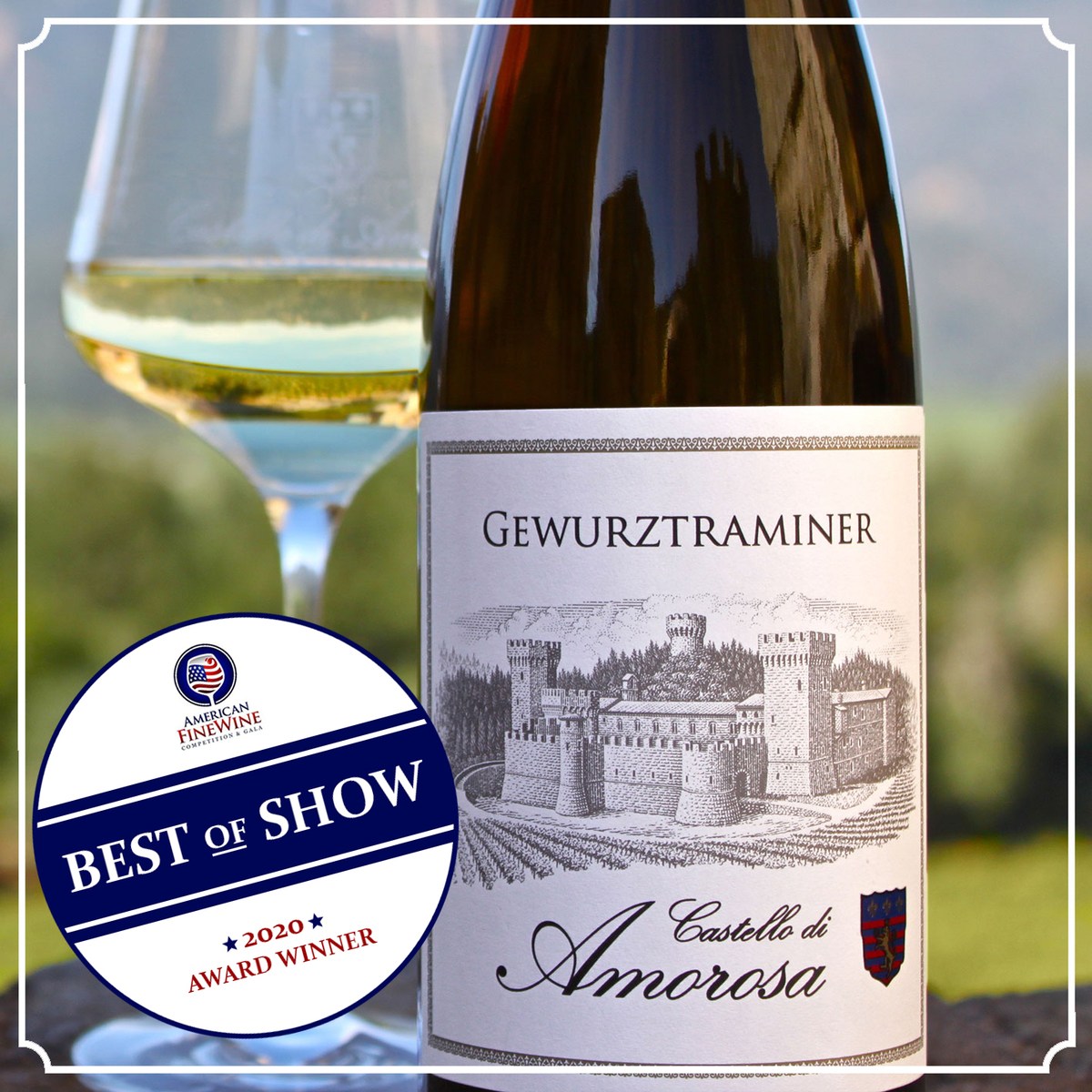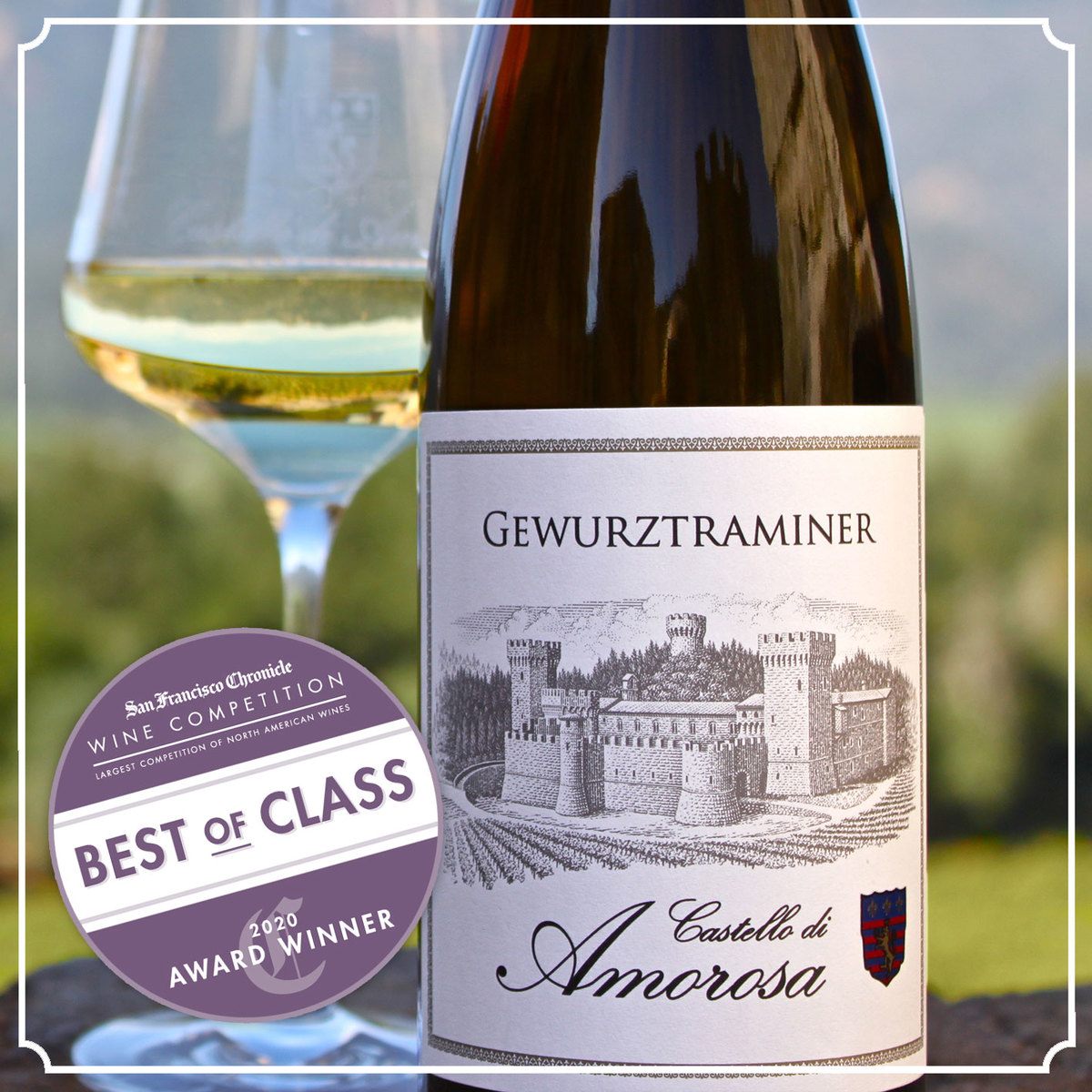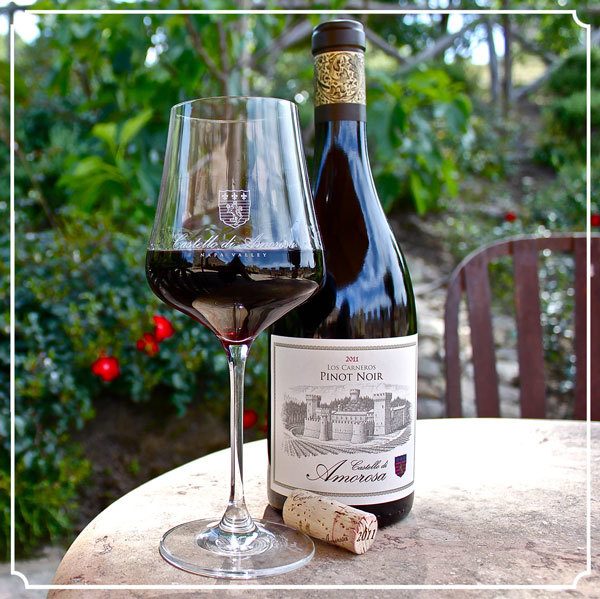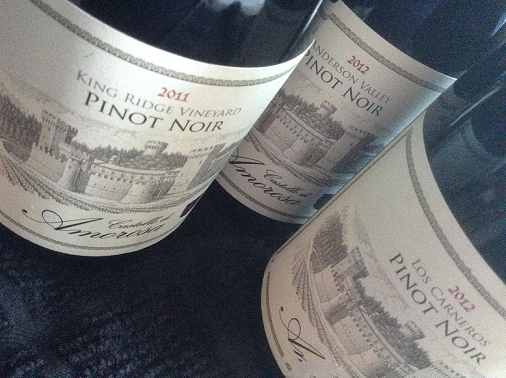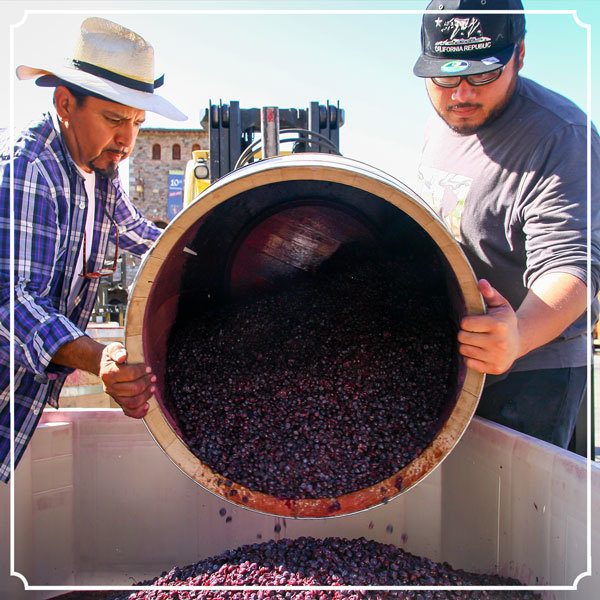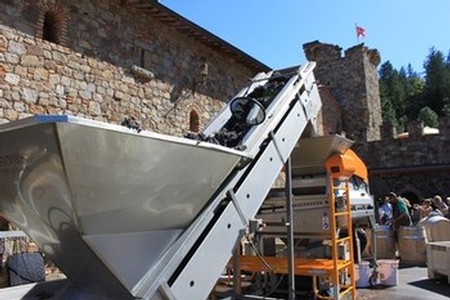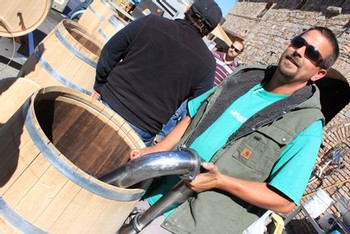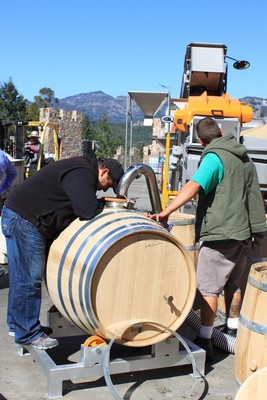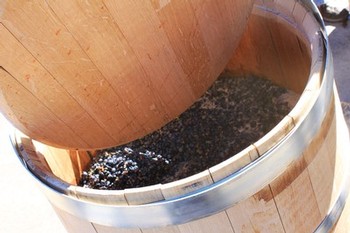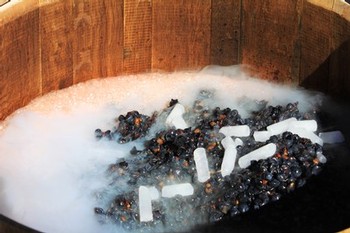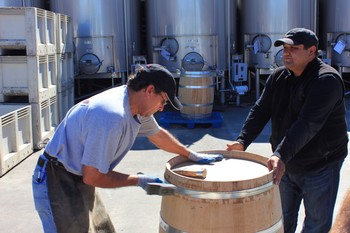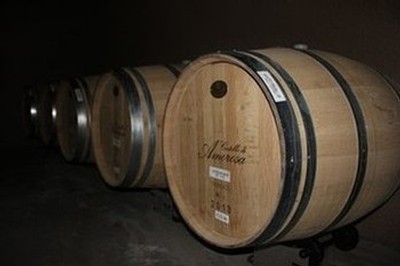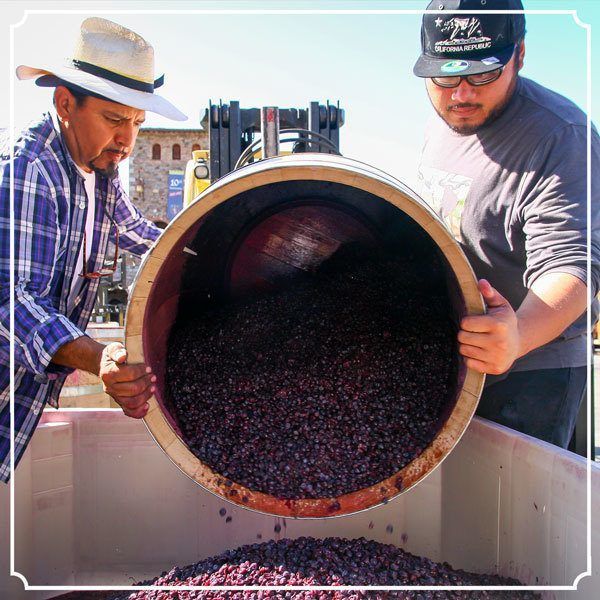Wax Bottle Seal

Bradley Aden

Wine Bottle Wax Seal
Discover how to open a wax-sealed bottle of wine with ease. Learn about the wine bottle wax seal at Castello di Amorosa and elevate your wine experience. A wax sealed bottle is a beautiful addition to your wine rack, but can be intimidating when it comes time to open it. This is easier than you may think! Simply plunge your corkscrew through the wax, as if it were not even there. Lift the cork slightly and wipe any wax crumbles from the opening. Pull the cork the rest of the way out and enjoy!
How To Properly Open A Wax-Sealed Bottle of Wine
Why Dip Our Bottles?
Wax provides a secure seal and barrier, far superior to a regular bottle wrap. Wax wine bottle seals also help customers distinguish between our regular wines and our reserve wines.
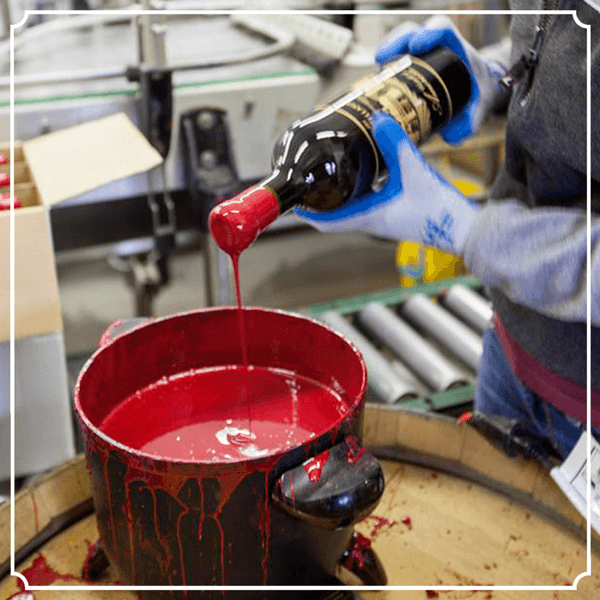
What Bottles Get Dipped?
We dip all our reserve wines in wax. This includes all single-vineyard Cabernet Sauvignon as well as our signature Cabernet, Il Barone. We also dip our single-vineyard Pinot Noir’s and our Super Tuscan Blend, La Castellana. We do dip wines other than reds such as Rosato, Il Passito, and Reserve Chardonnay.
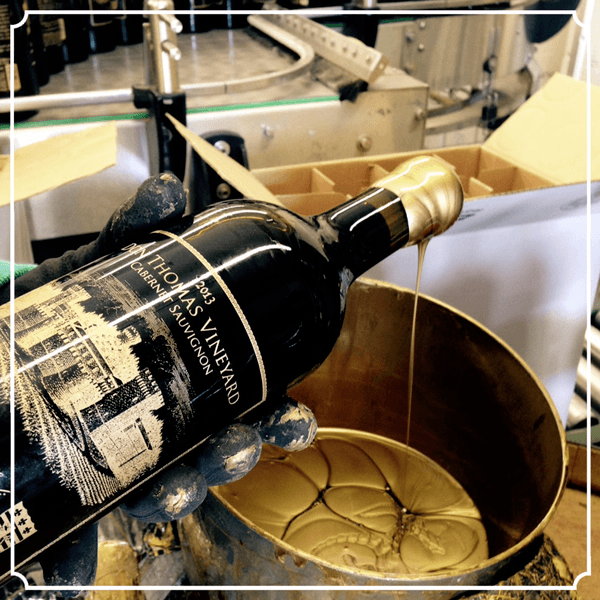

Manley Lane Vineyard

Jim Sullivan
Jim Sullivan, Vice President of Public Relations and Marketing spearheads Castello di Amorosa’s publicity and marketing initiatives.
With over 20 years of marketing, public relations and business development experience with professional motorsports teams and in a variety of healthcare organizations in Southern California, Jim first joined Castello di Amorosa in 2008 as Public Relations and Marketing Manager.
An avid cyclist, Jim fell in love with wine and wineries while exploring the Washington State countryside. His love of wine was reinforced during subsequent trips to the Napa Valley to visit family.
Jim holds an MBA from the University of Redlands and a Bachelor of Science from Central Washington University. He resides in Calistoga, Calif.
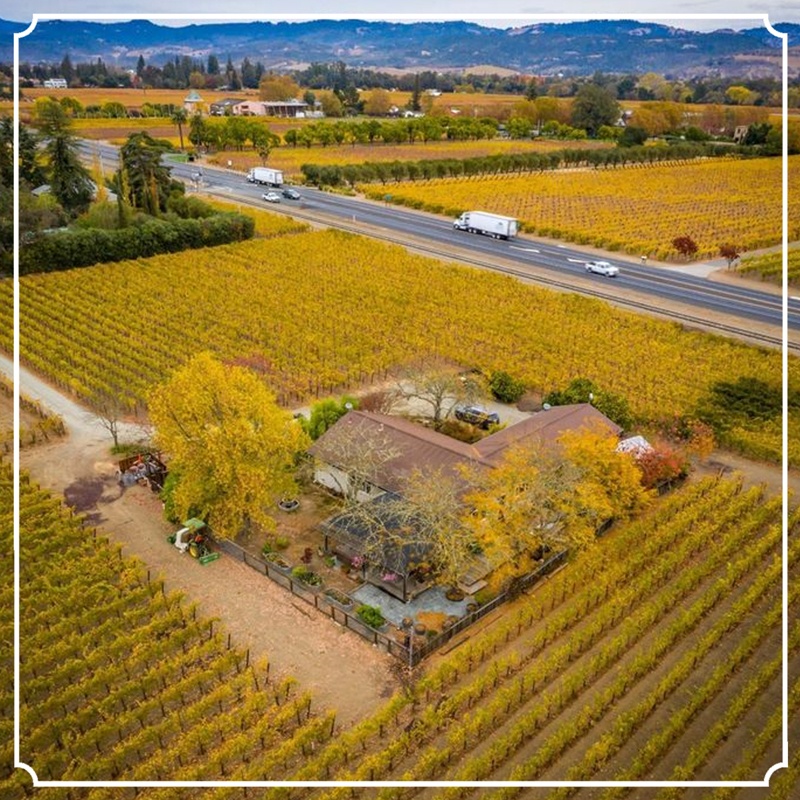
Manley Lane Vineyard in Rutherford, Napa Valley
On the corner of Manley Lane and Highway 29 is Castello’s estate vineyard which is located in Rutherford, home of unique terroir and some of Napa Valley’s most historic and world famous wines.
By most standards, the Manley Lane estate vineyard is tiny. It’s a mere 3 acres and is planted to Cabernet Sauvignon. The human touch with this vineyard starts with care provided by Vineyard Manager, David Bejar, who tends to the vineyard throughout the year, sets us up to produce a word-class Napa Valley Cabernet Sauvignon. Recently, leading international wine critic, Jeb Dunnuck evaluated the 2021 Manley Lane Cabernet Sauvignon and scored it 94 points!
SIGN UP HERE FOR FUTURE RELEASES OF MANLEY LANE CABERNET SAUVIGNON.
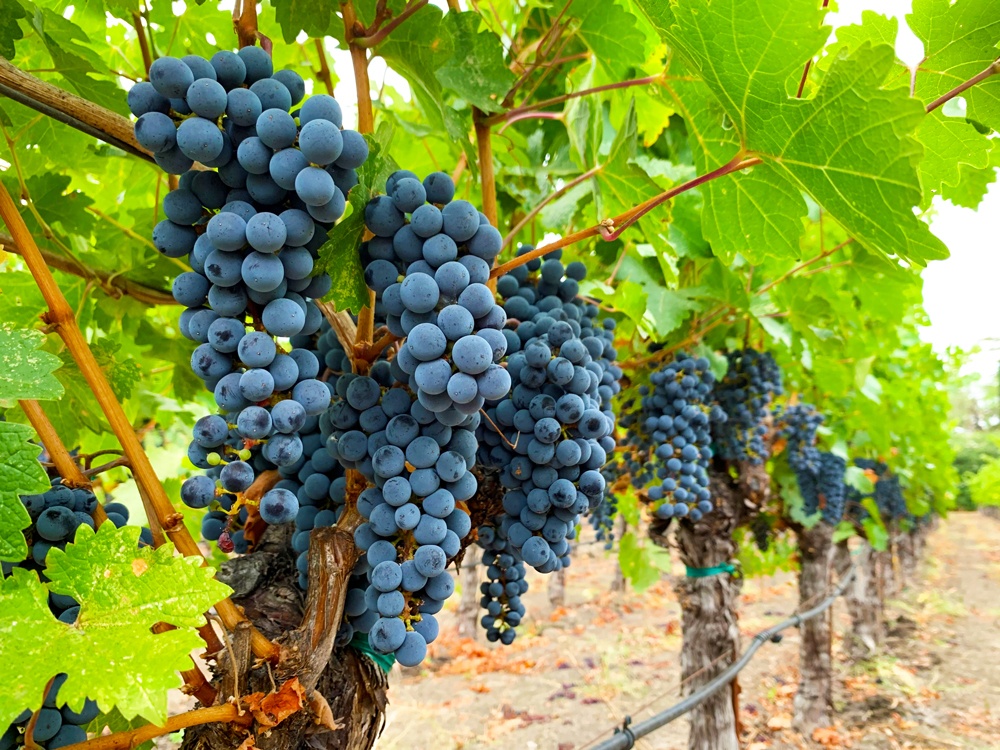
Manley Estate Vineyards – Rutherford AVA
The Rutherford AVA is an American Viticulatural Area located within Napa Valley AVA and centered on the town of Rutherford, California. The area is known for it’s unique terroir particularly with it’s Cabernet Sauvignon. The well-drained soil of this area is composition of gravel, loam and sand with volcanic deposits and marine sediments from the Franciscan Assemblage. The appellation accounts for only 6,650 acres.
Rutherford is an appellation within the appellation, which has a diversity of soils, exposure, and orientation that is as complex as Napa Valley. The alluvial soil fans that deliver into Rutherford from the east and west. What most people don’t understand about Rutherford dust is that it represents a later ripening site in the heart of the valley, which slows the ripening down to add finesse and complexity to the wines. Historical records show that a portion of the vineyard was actually planted in 1895 by Mrs. Thomas Rutherford herself
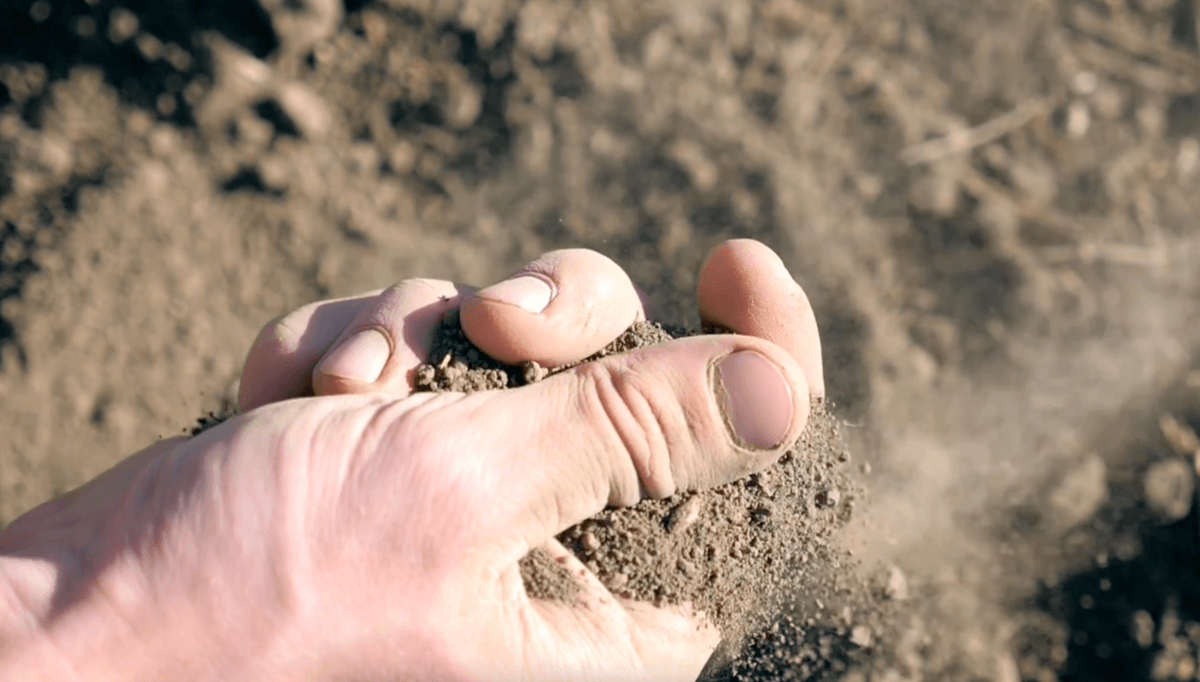
“The Rutherford Dust”
The legend of Rutherford dust starts with the regions superior soil makeup. The lighter dirt on the valley floor helped differentiate it from the other Napa Valley AVA’s. Thus giving the region the term “Rutherford Dust”, now the name is used around the world by winedrinkers alike. In Rutherford, the deeper soils and microclimates create longer growing seasons and ‘hang time’ that seem to round out the tannins in a soft, dusty style. The lighter soil dust gives the Rutherford region a special flavor profile that differentiates it from other Napa Valley regions. This gives wines from the area a powdery ‘fine dusty tannin’ effect with hints of plump cocoa powder.
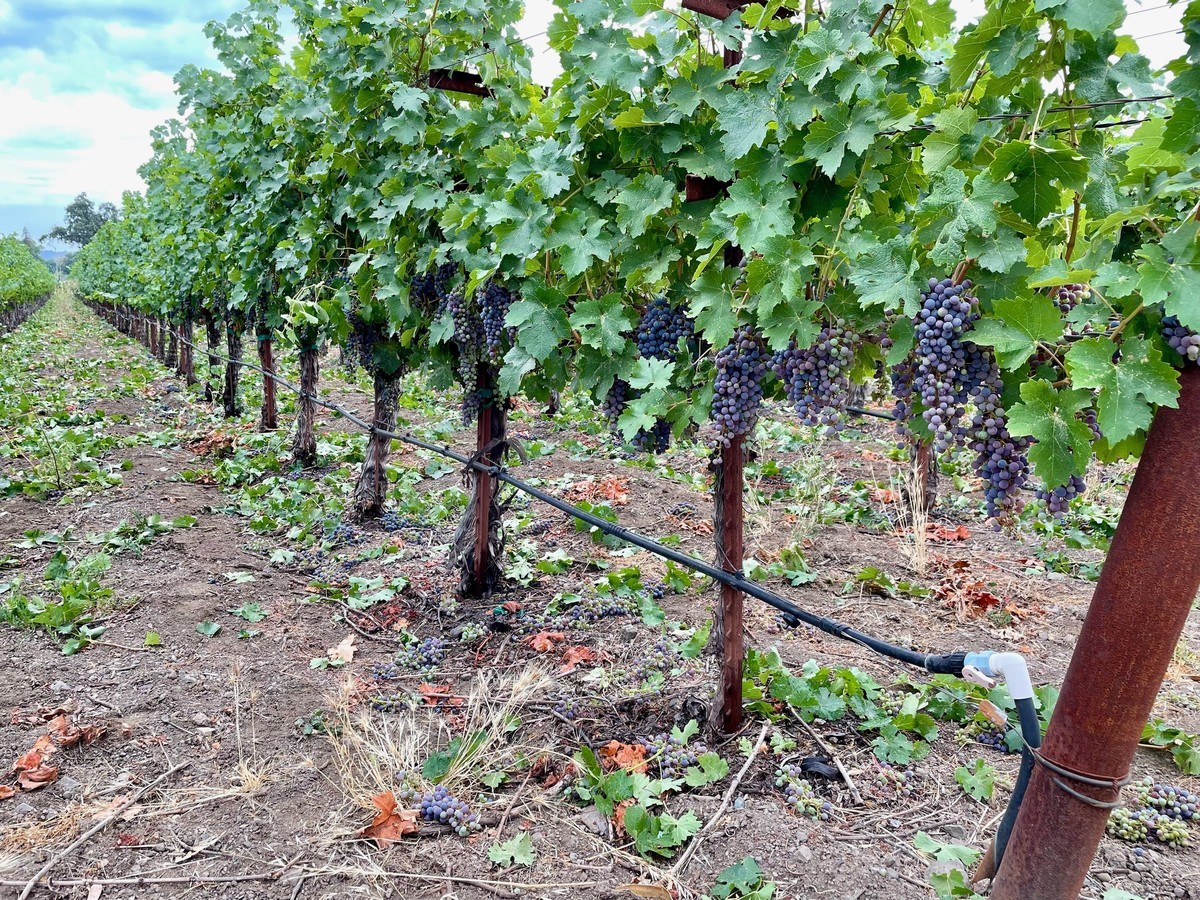
Cabernet Country
Director of Winemaking Brooks Painter noted “The quality of the Cabernet Sauvignon fruit from the Manley Lane Vineyard is astounding. It is deep, rich and full of intense flavors that can only come from valley floor Cabernet. We can’t wait to share the wine made from this vineyard in the very near future. Cheers to Napa Valley Cabernet Sauvignon!”
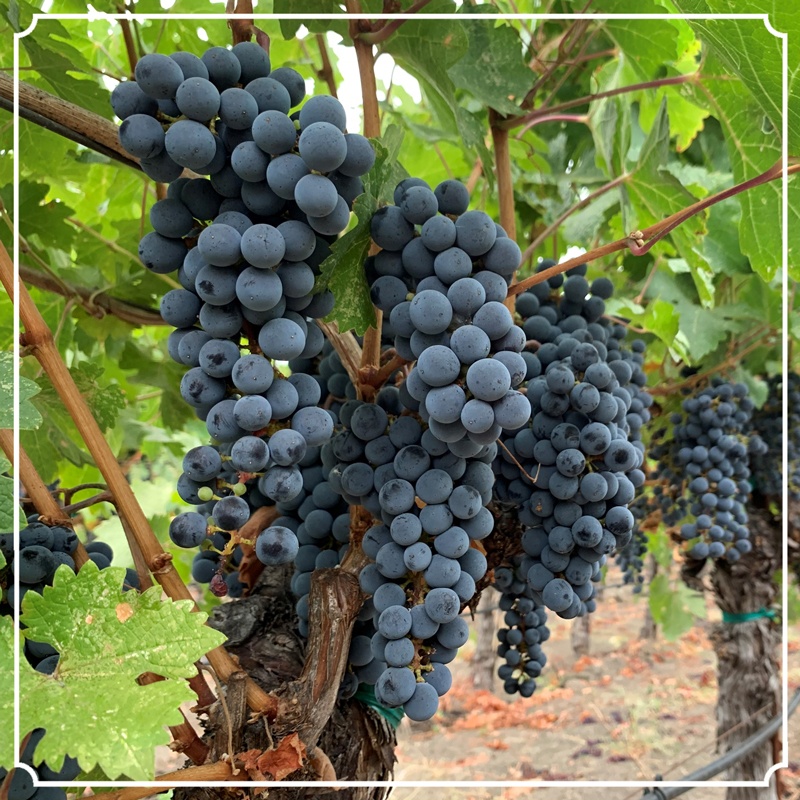
2020 American Fine Wine Competition!

Bradley Aden
2020 American Fine Wine Competition
We received 9 gold medals at The American Wine Competition. We were the only winery to receive 2 Best of Class Wines. AFWC is “Invitation-only” and includes only wines that received an invitation. The panel of 32 judges include a somm, a wine-trained chef, a wine writer, and an educator, with no producers or distributors to avoid biases. Judges in the AFWC circulate to encourage positive, consistent and careful evaluations.
Best of Show: 2018 Gewurztraminer, Anderson Valley
Winemaker Brooks Painter noted “The grapes for this wine were grown in the Anderson Valley, Mendocino County. We pick after the grapes have developed a pink to reddish hue, and the aromas are effuse with rose petals, cinnamon spice and exotic lychee fruit. We handle the fruit very carefully, avoiding as much as possible some of the more bitter tannins found in the skins. It is cold fermented in stainless steel and bottled in the spring. Gewürztraminer is a grape I am familiar with, as it was one of the first white grapes I made into wine when I started in the wine business 38 years ago. It is delightful with strong cheeses, spicy Asian dishes and sauced white meats.”
Mary Davidek, who runs our highly acclaimed Royal Food & Wine Pairing Tour at the Castello, recommends pairing spicy dishes such as Thai or Indian cuisine with Gewurztraminer, to complement the sweet & spicy elements of the wine.
Best of Class: 2014 Il Barone, Reserve Cabernet Sauvignon
Robert Parker of The Wine Advocate scored the 2014, 94 Points. Parker Noted “The 2014 Cabernet Sauvignon Il Barone is also impressively endowed with plenty of crème de cassis, blueberry, blackberry fruit, a dense purple color, full-bodied mouthfeel, sweet tannin and a long finish. The wine has more fruit and less minerality than the Butala Vineyard and doesn’t quite show the graphite character, but it is a beautiful Cabernet Sauvignon to drink over the next 15-20 years. Drink 2016 – 2036.”
Mary Davidek, who runs our highly acclaimed Royal Food & Wine Pairing Tour at the Castello, recommends grilled red meats, wild game, and flavorful cheeses to compliment the excellent 2014 vintage.
All awards from the 2020 American Fine Wine Competition
Castello di Amorosa also received a number of Gold and Double Gold Medals, along with two Best of Class medals for our 2015 Il Barone, Cabernet Sauvignon & 2018 Dry Gewürztraminer. We also received Best of Show White Wine Winner in 2018 Dry Gewürztraminer. Check out the complete list of award winners:
- 2018 DRY GEWURZTRAMINER – Best of Show – Best of Class – 95 Points
- 2014 IL BARONE, RESERVE CABERNET SAUVIGNON – Best of Class – 95 Points
- 2018 RESERVE CHARDONNAY, NAPA VALLEY – Double Gold Medal – 92 Points
- 2018 PINOT NOIR, TERRA DE PROMISSIO – Double Gold Medal – 90 Points
- 2018 CHARDONNAY, BIEN NACIDO – Gold Medal – 91 Points
- 2018 PINOT NOIR, MORNING DEW RANCH – Gold Medal – 90 Points
- 2018 PINOT NOIR, IL RUBINO – Gold Medal – 90 Points
- 2014 LA CASTELLANA, SUPER TUSCAN BLEND – Gold Medal – 90 Points
- 2018 LATE HARVEST GEWURZTRAMINER, ANDERSON VALLEY – Gold Medal – 90 Points
We are always proud of our amazing winemaking team, and look forward to sharing our award-winning wines with you!
2020 SF Chronicle Wine Competition!

Julie Ann Kodmur
2020 San Francisco Chronicle Wine Competition
There’s a gold rush happening! We received eight gold medals at The San Francisco Chronicle Wine Competition. These are terrific results, considering there was a field of 6,700 entries!
Please join us in congratulating winemakers Brooks Painter and Peter Velleno and vineyard manager David Bejar for their hard work.
We will be pouring these wines at the Chronicle’s Tasting at Ft. Mason Center in San Francisco on February 15 from 12:30 to 4:30 p.m. Come find us there! Tickets can be purchased at https://winejudging.com/public-tasting/.
Best of Class: 2018 Gewurztraminer, Anderson Valley
Acclaimed wine critic, Mike Dunne offered this tasting note of this wine: “For the third straight year, Castello di Amorosa dominated this class of Gewurztraminer with a release out of the Anderson Valley. If the 2018 talked up the varietal with any more rose petals in aroma, grapefruit, lychee and peach in flavor and spice in the finish it would likely break the seam of the bottle.”
Winemaker Brooks Painter noted “The grapes for this wine were grown in the Anderson Valley, Mendocino County. We pick after the grapes have developed a pink to reddish hue, and the aromas are effuse with rose petals, cinnamon spice and exotic lychee fruit. We handle the fruit very carefully, avoiding as much as possible some of the more bitter tannins found in the skins. It is cold fermented in stainless steel and bottled in the spring. Gewürztraminer is a grape I am familiar with, as it was one of the first white grapes I made into wine when I started in the wine business 38 years ago. It is delightful with strong cheeses, spicy Asian dishes and sauced white meats.”
Mary Davidek, who runs our highly acclaimed Royal Food & Wine Pairing Tour at the Castello, recommends pairing spicy dishes such as Thai or Indian cuisine with Gewurztraminer, to complement the sweet & spicy elements of the wine.
All awards from the 2020 SF Chronicle Wine Competition
Castello di Amorosa also received a number of Gold and Double Gold Medals, along with a fifth consecutive Best of Class medal for our 2018 Dry Gewürztraminer. Check out the complete list of award winners:
- 2018 DRY GEWURZTRAMINER – Best of Class (5th vintage in a row)
- 2015 IL BARONE, RESERVE CABERNET SAUVIGNON – Double Gold Medal (3nd vintage in a row)
- 2018 PINOT NOIR, THREE ARROWS RANCH – Double Gold Medal (2nd vintage in a row)
- 2017 PINOT NOIR, IL RUBINO – Double Gold Medal
- 2016 CABERNET SAUVIGNON, NAPA VALLEY – Gold Medal
- 2018 RESERVE CHARDONNAY, NAPA VALLEY – Gold Medal
- 2018 LATE HARVEST GEWURZTRAMINER, ANDERSON VALLEY – Gold Medal
- 2018 PINOT NOIR, TERRA DE PROMISSIO – Gold Medal
- 2014 LA CASTELLANA, SUPER TUSCAN BLEND – Gold Medal
We are so proud of our fantastic winemaking team, and look forward to sharing all of our award-winning wines with you!
Pinot Noir— The Art of Getting There

Mary Davidek
Pinot Noir— The Art of Getting There
“There is no ‘there’ there”. Gertrude Stein’s often quoted prose is commonly used to describe something that lacks soul, culture, life, or identity. While Ms. Stein was referring to the faceless existence of city-life, some critics have proclaimed this lament when speaking of grapes grown in and the wine making efforts of America.
The French speak of ‘terroir’ when referring to winemaking and the wines of France which is to say grapes are a reflection of the region in which they are grown; the soil, the climate, the aspect of a hillside, the amount of rain, the surrounding vegetation, etc. The United States’ AVA system has been criticized as nothing more than a weak effort to create a false sense of place in the wines produced — an illusion– as they state, there is nothing ‘there’.
*le sigh*
I decided to look beyond Cabernet Sauvignon, the reigning king of grapes for my initial attempt at disproving this theory and thus directed my attention to a varietal that, in my humble opinion, is ‘place’ personified. Pinot Noir, the thin skinned red wine grape of the Burgundy region of France has become increasingly popular with wine-buying wine-drinking Americans. It is a classic, elegant, food friendly wine—its enigmatic character and appeal as elusive as it is obvious.
Pinot Noir grapes are grown around the world but they flourish in cooler growing regions. In Oregon, the Willamette Valley is nearly the same latitude as the famed Burgundy region of France and has become synonymous with world class Pinot Noir. Oregon producers have found their sense of place as the Pinot fruit embodies the sophistication and finesse of a great Burgundy yet displays layered earth and bright red fruit summoning unrestrained California productions.
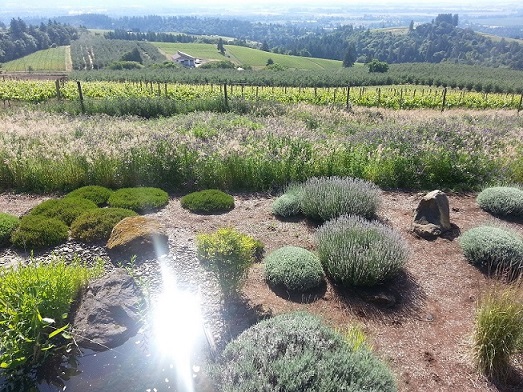
The rolling green hills of temperate Willamette Valley provide the perfect place for cool-climate loving Pinot Noir
California Pinot Noir is more mercurial stylistically without any one style from this large and geographically diverse growing area. From Santa Barbara and the Central Coast to the south and Sonoma County and Anderson Valley in the northern half of the state, diverse topography and weather patterns separate this region of more than 450 miles. From Santa Barbara and the Central Coast we find opulent wines with definitive Pinot Noir fruit that reflects its warmer and more southern roots with a controlled strength. Cooled by the San Pablo Bay, the Carneros region straddles both Napa and Sonoma Valley and shows hints of spice and brightness unique to these cooler vineyard sites of this sun-drenched area. North of Carneros we find the Sonoma Coast where Pinot shows depth and earthy complexity with some of California’s most acclaimed Pinot Noir producers firmly planted in this lush pacific expanse. Further north of Sonoma we find California’s newest Burgundy-like super star in the highly praised and sought after Anderson Valley of Mendocino County. Here the ocean cooled valley floor rarely sees summer temps above 85 degrees….even in the height of the season. Pacific marine influence floods the valley floor with morning coastal fog providing slow even ripening. Enthusiasts agree this temperate region yields fruit of subtle distinction.
A Pinot Noir trio from Castello di Amorosa; Los Carneros, Anderson Valley and the highly acclaimed King Ridge of Sonoma Coast. Each with expressive fruit and character from unique vineyard locations.
As far as American winemaking efforts, maybe we have not come up with anything quite as mysterious as ‘terroir’ to encapsulate the distinctive place of our wines….maybe we never will. But, as the saying goes, sometimes the best part of the journey is getting there.
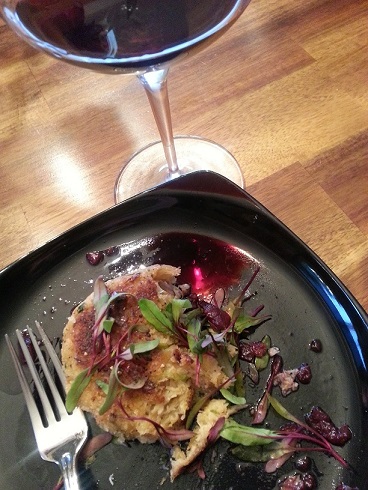
Dungeness Crabcakes with Rainier Cherry Pinot Noir Reduction
For the reduction-
- 10-15 ripe cherries, pitted and chopped
- 10 ounces Pinot Noir
- 1 Tbsp Honey
- 1 Tbsp Seasoned Rice Vinegar
- Pink peppercorn to taste
Add all ingredients to sauce pan. Slowly reduce over medium heat.
Mary Davidek C. S., S.W.
Red Wine Barrel Fermentation

How to Ferment Wine: Our Red Wine Oak Barrel Fermentation Process
During the Harvest season, there are always exciting things going on around the Castello, and today on the Crush Pad was no exception. Today, for the first time at the Castello, our winemaking team reserved a small lot of our Don Thomas Vineyard Cabernet Sauvignon for fermentation directly in French Oak Barrels.
Traditionally, the fermentation process takes place in stainless steel tanks, where the must (skins and seeds of the grapes) are cold-soaked with the juice before yeast is added. The cap, or layer of skins and seeds that get pushed to the top of the tanks from the activity taking place during fermentation, is broken up by either the punch-down or pump-over method, both of which ensure an even distribution of the color and flavors we wish to impart into our red wines. After five to eight days in these fermentation tanks, the juice is pressed from the skins and seeds and pumped into French Oak barrels for aging in the Castello’s extensive underground cave and cellar system.
What is barrel fermentation? Barrel fermentation means that the freshly destemmed grapes and their juices are pumped directly into French Oak barrels whose heads have been removed. Dry ice is added to cool the berries before the barrel heads are secured to seal in the must. The barrels are then laid on a rack that allows them to be rolled back and forth daily to ensure the cap stays moist and the oak is evenly introduced to the fermenting must and juice. Typically, two full barrels of must and juice will amount to one barrel of wine. The process of fermenting the juice in oak barrels helps to impart an added silkiness to the tannins and a rounder, more lush mouthfeel, especially to Bordeaux varietals. This extremely labor-intensive method of fermentation is typically reserved for only the most exclusive of wines, and the highly-acclaimed Cabernet Sauvignon from the Don Thomas Vineyard is an exceptional example of the quality of grapes deserving of such treatment.
The Don Thomas Cabernet Sauvinon clusters are conveyed into the berry sorter/ destemmer as a lucky tour group watches
The new French Oak barrels are filled directly from the destemmer
Our Cellar Supervisor, Chema, overseeing the juice and must being pumped into a special French Oak barrel that has a door in place to make filling and emptying easier
The deconstructed barrel waiting to be resealed with the juice and must inside
Dry ice is added to the must before the barrels are resealed to help cool off the berries
Resealing the barrel heads before they are sent into the cellars to begin the fermentation process
The barrels are stored in a special temperature-controlled room in the Castello’s cellars during the fermentation process.
Bring on the Pig-ment-Skin

Mary Davidek
Bring on the Pig-ment-Skin
As summer comes to a close and long hot days become abbreviated and alleviated with cooler temps and sweater worthy evenings–September is here. With it, the beauty of harvest and fall is underway. Undeniably my favorite time of the year; the anticipation, the realization of another season. Nervously…… we wait. The hopes, the expectations— will it be as good as last year? Will this year bring the success of another triumph? Will we get the points and revel in great scores? It has finally arrived.
That’s right… are you ready for some football!?
Regular season NFL starts this week and the pigskin is finally back in action. Of course, while the football is being passed and punted on the gridiron the red zone has officially been crossed at my house. Bring on the pigment!
All wine grapes contain clear juice. Although there are a few varietals with tinted juice it is extremely rare. Red wine becomes colored or pigmented in the winemaking process. The liberated or pressed juice of black grapes are fermented in contact with the skins. Since the skins contain all the color, fermentation with the skins extracts this color to the juice and resultant wine. The skin of black grapes also contains complex elements that not only result in this pigmented juice, but imparts tannins and many healthful antioxidants.
My match-up this week includes Cabernet Sauvignon; and since it doesn’t get much more pigmented than this thick-skinned varietal… well….. this pairing calls for a pepper spiked little pig of my own to mark the occasion.
Cheers, or as they say on the field—get ready for kickoff!
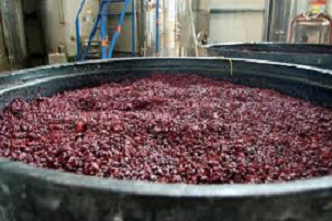
No need for binoculars! View this action live and in person from the proverbial 50 yard line! Fall is the time of year for a trip to wine country. Watch the winemaking process from Castello di Amorosa’s home field, the crush pad!
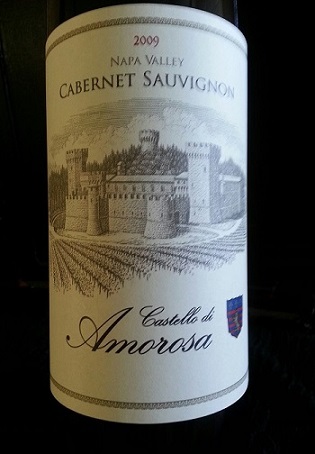
Talk about score! Robert Parker gave Castello di Amorosa’s 2009 Cabernet Sauvignon 91 points! This 100% Cabernet Sauvignon is brawny with loads of muscle yet exhibits a graceful and elegant mouth feel. Brooding deep dark fruit with a hint of spice box and black pepper. Touchdown!
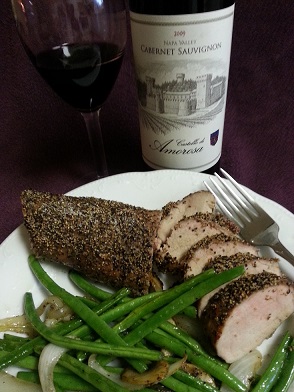
Simple, quick and delicious. This meal won’t keep you away from important plays! I sprinkled the tenderloin with sea salt and garlic powder then very generously coated it with coarse ground pepper. Bake at 350 degrees until the center of the loin reaches 150 deg. Let rest for 10-15 minutes before serving. The peppery seasoned tenderloin plays off the dark fruit of the Cabernet. After Sunday’s match-up this makes for incredible sandwiches to enjoy the next night…during Monday Night Football!
